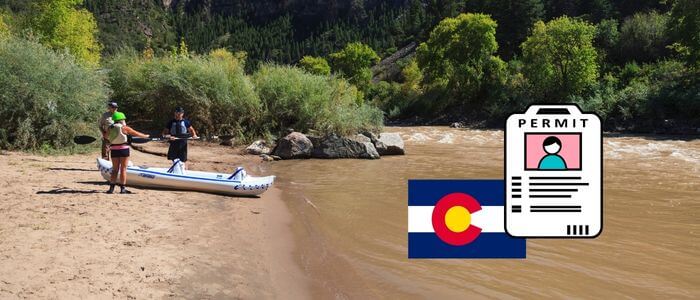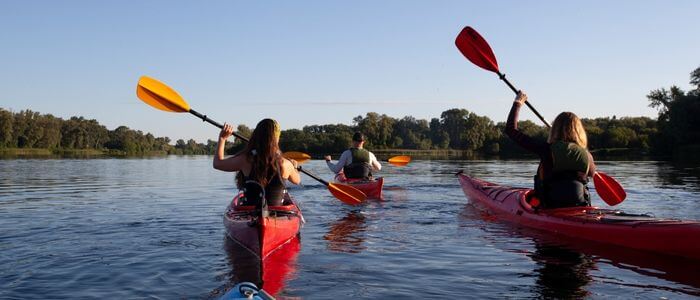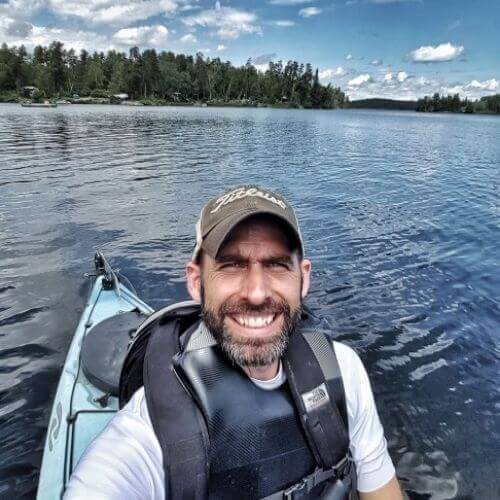
Kayaking is a popular pastime in Minnesota, with its many lakes and rivers providing ample opportunities for adventure and recreation. But, before you set out on your kayaking excursion, you may wonder if you need a license to kayak in Minnesota. The answer is yes, but the type of License required depends on the water you plan to kayak on.
In this article, we will explore the types of licenses required for kayaking in Minnesota and the rules and regulations you need to know to stay safe and legal on the water:

Yes, kayaks and canoes need to be licensed in Minnesota through the MN Department of Natural Resources. You don’t need a license if your Watercraft is 10 feet or less in length. If you’ve owned your Watercraft in another state and you’ve been residing in Minnesota for more than 90 days, you don’t need to register it. However, powered boats and paddleboards with a trolling motor need a license.
In Minnesota, boating law enforcement is primarily the responsibility of the Department of Natural Resources (DNR) Conservation Officers. These officers enforce state and federal laws related to boating, fishing, hunting, and other outdoor activities.
The DNR has a number of officers who specialize in boating enforcement, and they typically patrol the state’s lakes, rivers, and other bodies of water. They are trained to detect and enforce violations of boating laws and regulations, including those related to safety, navigation, and environmental protection.
Some of the specific duties of boating law enforcement officers in Minnesota include the following:
In addition to the DNR Conservation Officers, other agencies such as the Minnesota State Patrol and local sheriff’s departments also have the authority to enforce boating laws in the state.

Following are some general laws for kayaking in Minnesota. Kayak Registration Laws in Minnesota are:
Hand powered kayak 10 feet long or smaller is not required to register in Minnesota.
All motorized Watercraft, including motorized kayaks, must be registered with the Minnesota Registry of Motor Vehicles before they can be used legally on Minnesota’s waterways.
In Minnesota, certain boats over 16 feet in length must be registered and given a title. However, canoes and kayaks are exempt from this requirement.
In Minnesota, you do not need a license or any form of education to operate a kayak or canoe that is 10 ft or less in length. These types of watercraft only require operator licensing or education as long as they have no attached motor.
When operating motorized kayaks, adult operators must only have a boating license from the specific Watercraft. This License is necessary to operate motorized vehicles on the water.
In Minnesota, driving a boat while drunk or on drugs is not allowed. If you get caught, it’s like getting a DUI, and it’s called a BWI. If your blood alcohol level is 0.08%, you will get in trouble. If it’s above 0.16%, it’s a more serious crime.
However, it is okay to have alcohol on a boat and a higher than 0.08% blood alcohol level while using manual power to move the boat. But if a person on the boat cannot operate it properly due to drugs, including medicine, marijuana, or other illegal drugs, they can still be charged with BWI if they fail a test or show signs of being drunk.
Just like with a DUI, if you are found guilty of a BWI, you can face fines, jail time, and the loss of your boating privileges. Additionally, if you are found guilty of a BWI, it can affect your driving privileges.
Following are some safety laws for kayaking in Minnesota.
Every boat must have a special life jacket approved by the Coast Guard for each person on the boat. Also, kids under ten years old must wear a special life jacket when they are not in a room below the top deck or when the boat is not anchored.
In Minnesota, 16 feet or longer boats must have a special safety device called a Type IV on board. But, this law does not include kayaks and canoes and does not have to have a Type IV device.
Individuals on unpowered vessels, such as kayakers and canoeists, must have a white lantern or flashlight visible from at least two miles away on the horizon. This light must be displayed sufficiently to prevent collisions with other Watercraft.
Vessels under 40 feet in length powered by trolling motors (such as kayaks and canoes) must have red and green sidelights that can be seen from 112.5 degrees on each side or a combination of a 225-degree red and green bow light. Additionally, an all-around white light is required. However, when anchored, only white light is needed.
In Minnesota, kayaks and canoes are not required to have a sounding device, but motorized vessels measuring between 16 to 26 feet must have a hand, mouth, or power-operated whistle or horn.
The device must produce a continuous sound for two seconds that can be heard from at least one-half mile away. A whistle attached to a PFD is a convenient option for kayakers and canoeists as it is easily accessible in an emergency.
In an emergency, a Visual Distress Signal (VDS) is a tool that can assist in quickly locating your boat. These signals come in various forms, including those visible during daylight hours, those that can be seen at night, and those that can be used at any time.
On Lake Superior, all vessels are required to have USCG-approved Visual Distress Signals (VDS) on board at all times. Specifically, between sunset and sunrise, all vessels must have night VDS on board.
This includes kayaks, canoes, electric distress lights, or three pyrotechnic devices. During the day, motorized vessels over 16 feet and kayaks and canoes with trolling motors must carry three daytime VDS signaling devices.
Even if you have a trolling motor on your kayak, you don’t need a fire extinguisher if the fuel tank is not permanently attached or locked away. But as a safety measure, it is strongly recommended that you carry a small class B-I fire extinguisher. A fire on a boat can be dangerous without an extinguisher, especially if you are far from shore.
Safety guidelines for kayaking are as follows:
The kayak registration procedure is as follows:
First, you will need to fill out the Boat Registration and Title Application form, which can be found on the DNR website or at the DNR License Center. This form will require you to provide information such as the boat’s length, manufacturer, type of hull material, propulsion, model, year, serial or HIN, and the name and address of the boat’s owner. You will also need proof of sales tax payment and your contact information.
After filling out the form, you will need to submit it along with all required documents and payment for the registration fee to the DNR License Center or a deputy registrar of motor vehicles. The registration fee will vary depending on the length of your boat and the type of propulsion.
A watercraft license is optional for non-motorized kayaks that are 10 feet or shorter or for kayaks owned by out-of-state residents that are not required to be licensed in their home state and are not in Minnesota for longer than 90 consecutive days.
You can renew your kayak’s License at a deputy registrar of motor vehicles or the DNR License Bureau in St. Paul. You can also renew online using the online licensing system. If you are not the registered owner, someone else may renew for you if they have the DNR-generated renewal notice, a Consent to Renew Registration form, or if they can show proof of being the Power of Attorney.

The watercraft registration fee schedule is as follows:
All Types of Watercraft: $10.60
So, a License is not required for a manually operated kayak in Minnesota. However, boating law enforcement in Minnesota still applies to kayakers, and it is essential to follow general kayaking laws, kayak operator education laws, and safety kayaking laws to ensure a safe and enjoyable experience on the water.
Additionally, kayakers should be aware of Minnesota’s kayak registration procedure and the watercraft registration fee schedule. By following these laws and guidelines, kayakers can enjoy the beautiful waters of Minnesota while also ensuring their safety and the safety of others.

Hey there kayak lovers! I’m Jay Schwartz, the author here at Kayak Guidance! You know water sports – you know me! My life is all about it. Kayaking, Paddleboarding, Fishing, Snorkeling and so much more. I love to share my passion and knowledge with all of you.

Hey there kayak lovers! I’m Jay Schwartz, the author here at Kayak Guidance! You know water sports – you know me! My life is all about it. Kayaking, Paddleboarding, Fishing, Snorkeling and so much more. I love to share my passion and knowledge with all of you.

Welcome to KayakGuidance.com! If you’re looking to have some fun outdoor water adventures, then you have come to the right place. We help our readers find the best kayaks and water related equipment to help you have the best time of your life whenever you are engaging in water activities.
This site is a participant in the Amazon services LLC associates program, an affiliate advertising program designed to provide a means for sites to earn advertising fees by advertising and linking to Amazon.com.